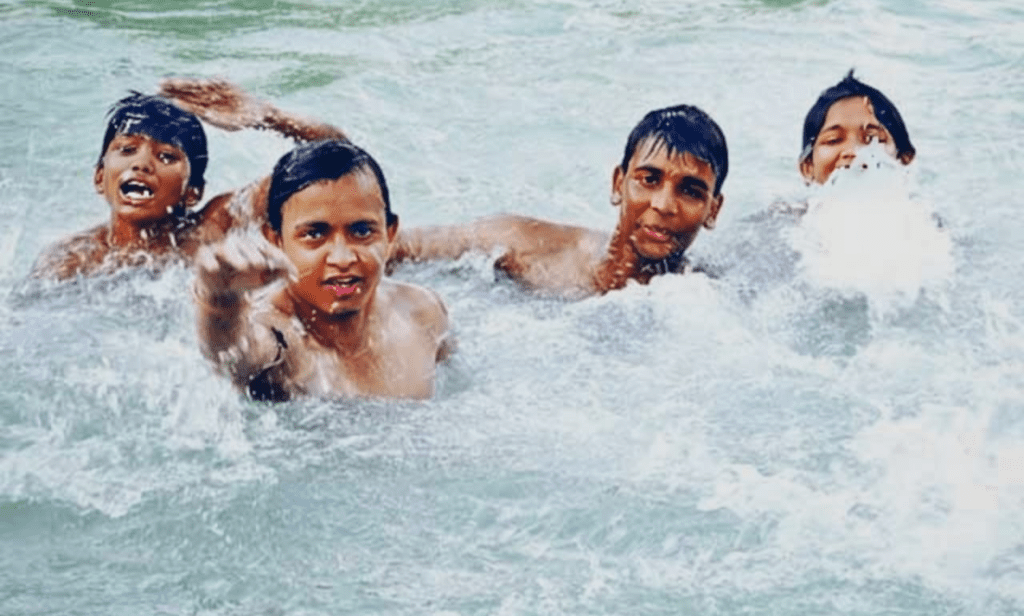
Summer’s heat drives millions toward lakes, rivers, and swimming holes, seeking relief in cool waters. Yet beneath the surface of these inviting retreats lurks a microscopic predator few understand: Naegleria fowleri, infamously known as the brain-eating amoeba. This single-celled organism thrives in warm freshwater environments, particularly when temperatures climb above 80°F (27°C). While infections are extraordinarily rare—only 3-8 reported annually across the United States—the consequences are almost always catastrophic. The amoeba doesn’t seek out humans intentionally. It enters exclusively through the nose during water activities like diving, water skiing, or rough play. From there, it travels along the olfactory nerve, a direct pathway to the brain. Once it reaches this destination, it triggers a devastating condition called Primary Amebic Meningoencephalitis (PAM), causing rapid destruction of brain tissue. The fatality rate exceeds 97%, making it one of medicine’s most lethal infections.
Climate change is reshaping the risk map. Traditionally confined to southern states like Texas and Florida, confirmed cases have now appeared as far north as Minnesota, Iowa, and even Nebraska. Rising average water temperatures expand the amoeba’s comfortable habitat. “We’re observing a clear northward shift in environmental suitability for Naegleria fowleri,” states Dr. Julia Haston, a CDC epidemiologist specializing in waterborne diseases. “Areas experiencing prolonged heatwaves with multiple consecutive days above 90°F (32°C) are becoming new zones of concern.” This shift makes awareness crucial beyond traditional hotspots. Not all warm water poses equal danger. The amoeba flourishes in specific conditions. Stagnant or slow-moving water bodies like ponds, poorly maintained lakes, and hot springs are prime habitats. It also favors sediment at the bottom of lakes and rivers. Surprisingly, artificial environments aren’t immune. Insufficiently chlorinated swimming pools, splash pads with malfunctioning disinfection systems, and even home plumbing can harbor the organism. A tragic 2023 case in Florida involved a man who contracted PAM after using contaminated tap water for a sinus rinse using a neti pot. This highlights a critical point: drinking water infested with the amoeba is harmless. The threat exists only when contaminated water is forced deep into the nasal passages.
Understanding the timeline of infection is vital for potential recognition. Symptoms typically emerge between 1 to 9 days after exposure, starting with signs easily mistaken for common summer illnesses. A severe frontal headache, sudden high fever, nausea, and vomiting are often the first red flags. Stiff neck and sensitivity to light may follow, resembling bacterial meningitis. This initial phase is tragically where misdiagnosis often occurs. Within an astonishingly short window—often just 24 to 48 hours later—neurological devastation escalates rapidly. Symptoms progress to confusion, loss of balance, seizures, hallucinations, and coma. Diagnosing PAM is notoriously difficult and requires specific, urgent testing. Cerebrospinal fluid (CSF), obtained via a spinal tap, must be examined under a microscope or subjected to specialized PCR tests to detect the amoeba’s genetic material. Few hospitals have the immediate capacity for this, causing critical delays.
Treatment, even when started promptly, faces immense challenges. The standard protocol involves a multi-pronged attack: high doses of the anti-parasitic drug miltefosine, aggressive management of brain swelling (often including medically induced hypothermia to reduce brain metabolism), and powerful antifungal medications like amphotericin B. Access to miltefosine is critical; thanks to advocacy efforts, it is now stockpiled at over 200 strategic hospitals across the US. Despite these efforts, survival remains exceptional. Only five survivors are documented in the US since the first case in 1962. Each survivor’s story offers crucial lessons. Kali Hardig, who survived infection in Arkansas in 2013 at age 12, benefited from an unprecedented combination: extremely early detection (doctors suspected PAM within hours of her severe headache starting), immediate administration of miltefosine, and induced hypothermia. Her physician, Dr. Vikram Haswani, emphasizes, “Time is the enemy measured in minutes, not hours. Rapid recognition and the immediate start of targeted therapy are the only factors giving a fighting chance.” Research continues, exploring avenues like nasal vaccines tested in mice that aim to block the amoeba’s nerve pathway access and faster diagnostic nasal swabs.
Prevention remains our most powerful weapon, grounded in practical, accessible measures. Avoiding underwater activities like diving or jumping feet-first into warm, stagnant freshwater is the single most effective step. When swimming in lakes or rivers, especially during peak summer heat, keeping your head above water significantly reduces risk. For activities where submersion is likely, such as water skiing or tubing, wearing firmly fitted nose clips creates a reliable physical barrier. Home water safety is equally important. For nasal irrigation or ritual cleansing practices, never use tap water straight from the faucet. Water must be boiled vigorously for at least 5 minutes and then cooled, or alternatively, use distilled or sterile water. Labeling a dedicated “nasal rinse only” kettle can prevent accidents. Maintaining swimming pools and splash pads requires rigorous attention to chlorine levels (1-3 parts per million) and pH balance (7.2-7.8). The amoeba is killed instantly in properly chlorinated water. Following preventable deaths at a Texas splash pad in 2021, the CDC strengthened its Model Aquatic Health Code (MAHC), emphasizing real-time water quality monitoring and secondary disinfection systems for spray grounds. Homeowners relying on well water should test it annually, particularly if used for nasal purposes. A 2022 study in Emerging Infectious Diseases linked several infections to poorly maintained private well systems where sediment buildup provided a haven for the amoeba.
Public awareness is still alarmingly low. A 2024 national survey by Johns Hopkins revealed that 68% of parents with young children could not identify a single symptom of PAM, and 82% were unaware that neti pots posed any risk. This knowledge gap is dangerous as the amoeba’s geographic reach grows. “Assuming you’re safe because you don’t live in the Deep South is a misconception now,” warns Dr. Haston. “We need a mindset shift focused on how we interact with warm freshwater, not avoiding it entirely.” Internationally, countries like Pakistan and Thailand report cases often linked to deep nasal cleansing rituals using untreated water, underscoring the global nature of water safety education.
Ongoing research offers glimmers of hope. Teams at the University of South Florida are refining a rapid nasal swab test that could potentially detect exposure before symptoms start. Increased miltefosine availability and standardized treatment protocols are improving hospital readiness. Climate modeling by agencies like NOAA helps predict higher-risk zones. However, until breakthroughs translate into widespread solutions, practical, informed precautions are non-negotiable. “Respect the organism, not fear,” advises veteran microbiologist Dr. Francine Marciano-Cabral, who has studied Naegleria for decades. “Understand where it lives, how it enters, and then take simple, effective steps to block that entry. That knowledge empowers you to enjoy water safely.”
Water is fundamental to summer joy. Cancelling lake vacations or pool time isn’t the answer. Smart choices drastically reduce an already minute risk. Opt for swimming in cooler, free-flowing rivers over stagnant ponds. Choose well-maintained, chlorinated pools during extreme heat waves. Supervise children to minimize underwater dunking. Use nose clips consistently for high-speed water sports. Treat water properly for nasal use. These actions transform anxiety into confidence. Statistically, you’re far more likely to be struck by lightning than encounter this amoeba. But unlike lightning, PAM prevention is firmly within our control through awareness and behavior. Share this knowledge – talk to lifeguards, discuss it at community pools, and mention nose clips to fellow water-skiers. Collective vigilance, grounded in science, not fear, is how communities build truly safer summers for everyone. The water is still calling. With the right precautions, the answer can confidently be, “Let’s go.”
